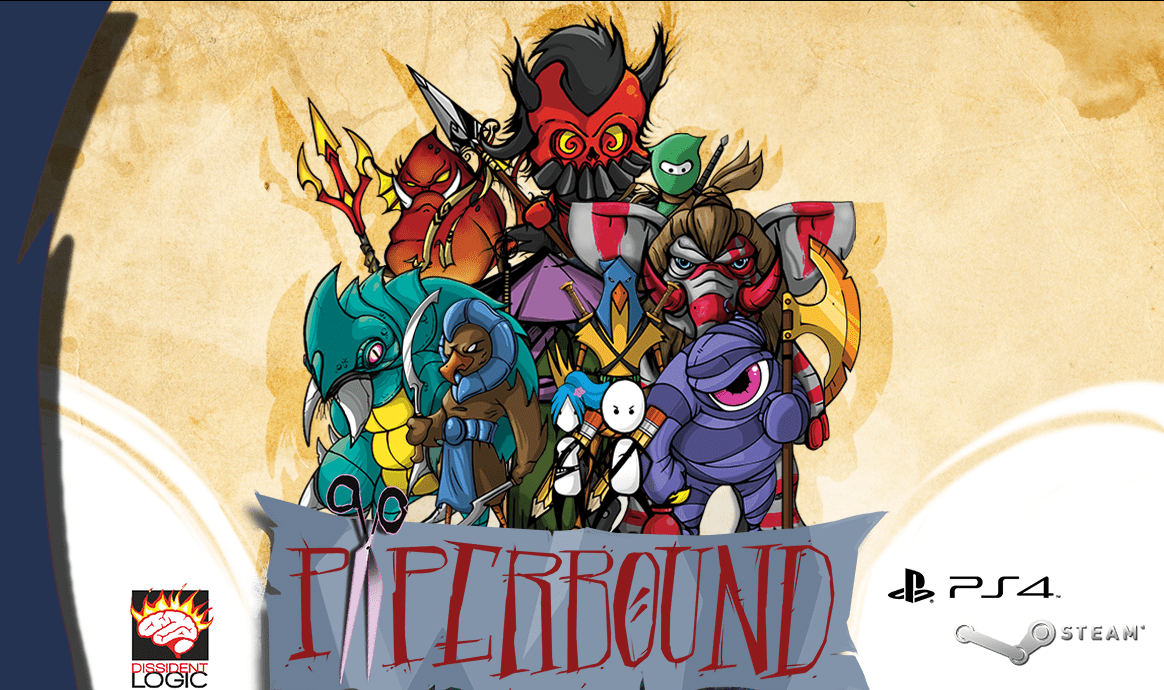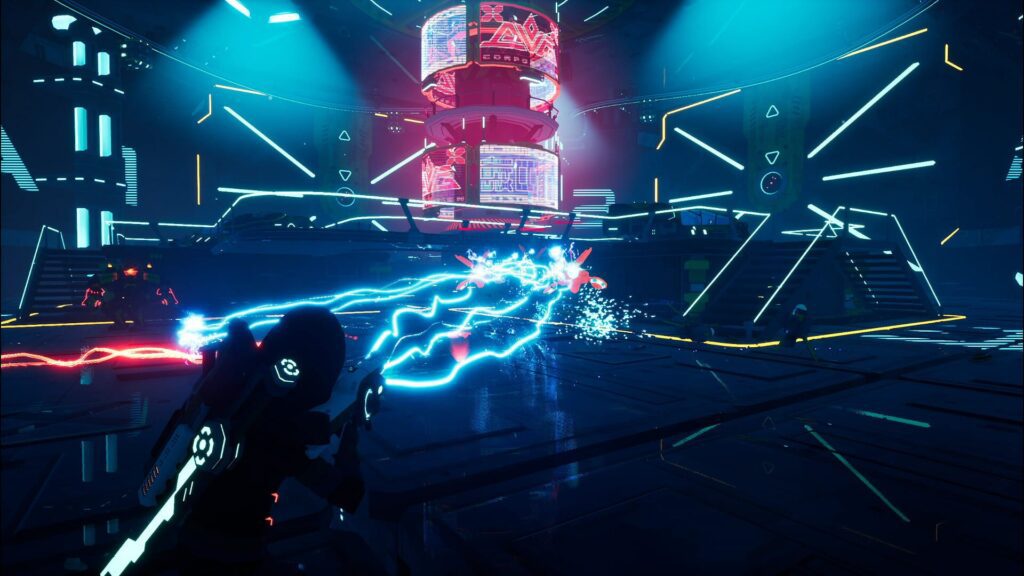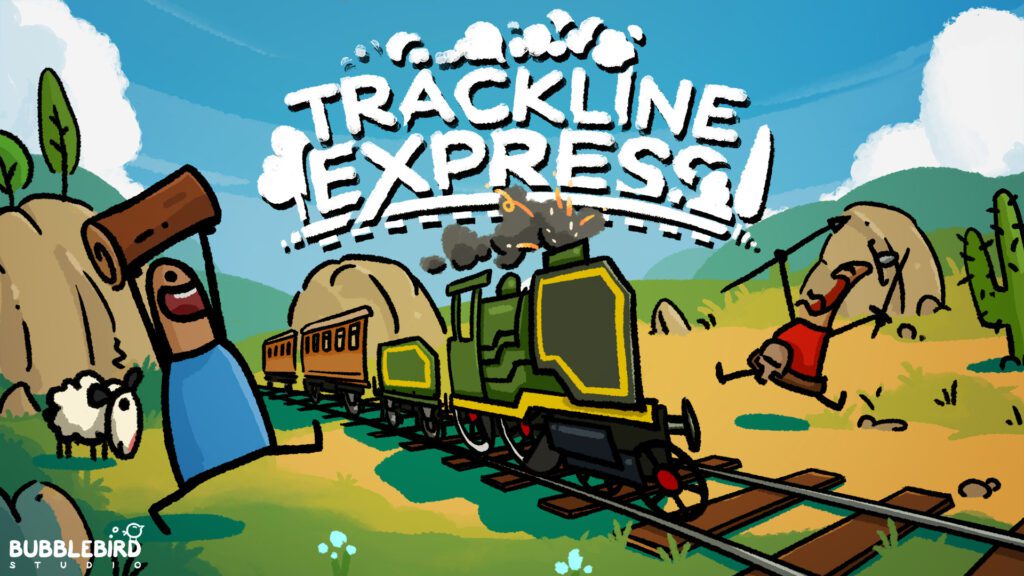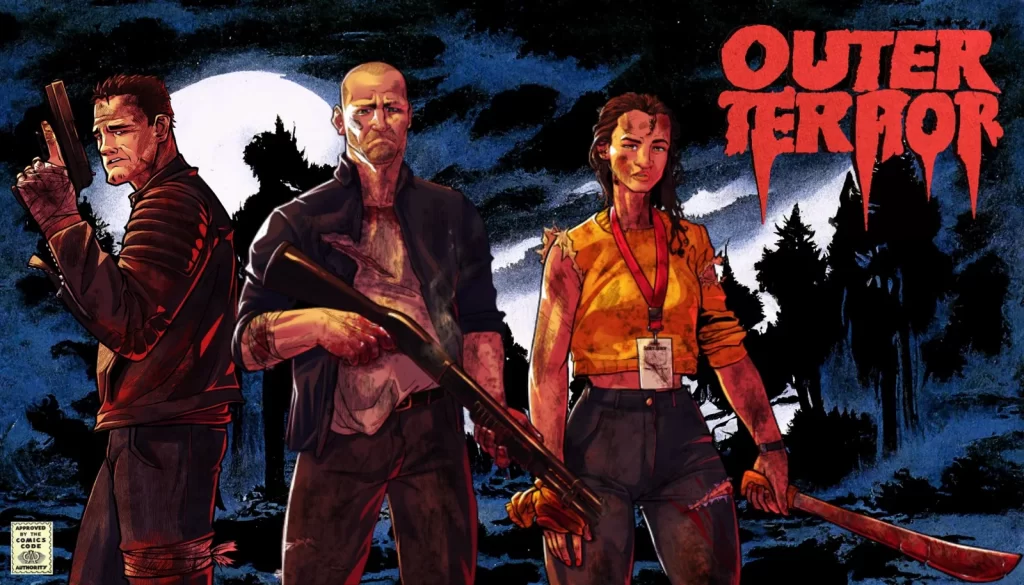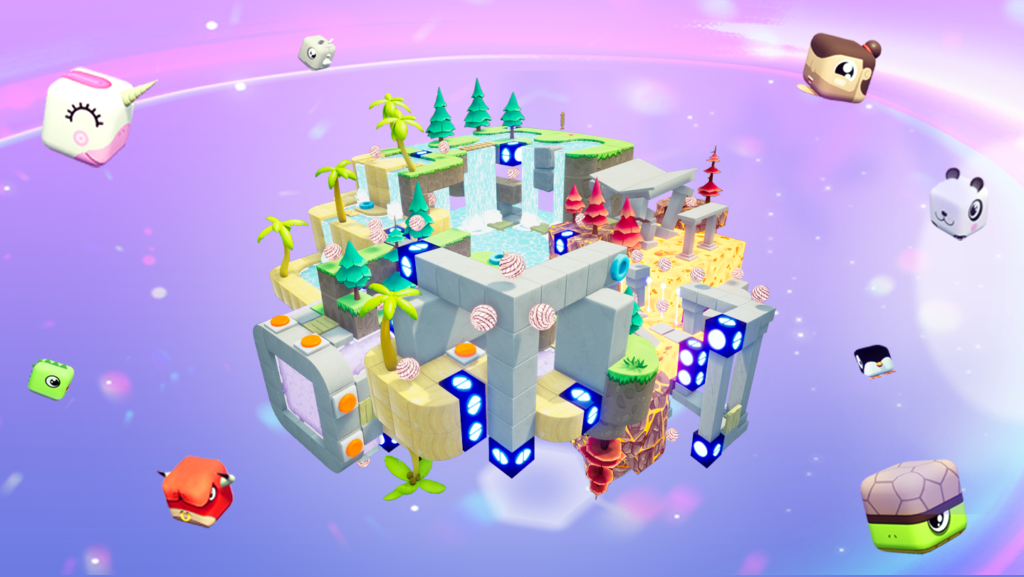Today, we have an interview with Dan Holbert of Dissident Logic, lead programmer and creator of new fighter Paperbound. Paperbound is a twitchy local multiplayer brawler designed to be played with friends. We talk to him about everything from his history with games, to Paperbound itself and the industry at large. It’s a great read, so grab a drink and sit down with us!
So before we get started, tell us a bit about your history with developing video games, how did you get started?
The first game I ever made was called Revenge of Poopypants. It was a school project. I was lucky enough to have a programming class in high school. Also luckily, the bar was pretty low. It was a space shoot’em up type game like Galaga, except the only enemy was a giant head, whose name I suppose you can guess. Unfortunately (or perhaps fortunately), it has been lost to the ravages of time.
I then started getting pretty heavy into C/C++ programming, doing some Quake III Arena mods–mods used to be a thing (and kind-of still are…check out www.ModDB.com). This was before UDK and Unity. One of these mods was called Blast-o-Rama, and you could kill people only by knocking them into death pits–your weapons only did knockback, no damage. I also added a pretty fun grappling hook. I love doing physicsy things, which you could probably tell from playing Paperbound.
When I went to college, there were very few schools offering degrees in game development, so I studied computer science at a regular state university. I did a lot of game and especially graphics programming in my spare time and tied it into my schoolwork as often as I could. ATI (the graphics card maker, now owned by AMD) had an office really close to my school, so I was able to secure an internship there–first coding boring tests for the hardware and then doing some research using GPUs for novel things.
That all helped me land my first job in the game industry as a graphics programmer working on Empire Earth III. It’s pretty rare to start off as a graphics programmer, but if you work hard and build up your skills in this area, you’ll always have job opportunities.
I spent a total of 7 years working at bigger studios. It was a great experience, but I always felt like I was working on “someone else’s game.” So I left in 2013 to start a company where anyone on the team would be able to feel creatively satisfied.
Was it a scary experience jumping from being employed to starting your own company? How did you find the transition?
Actually, no. Most people think that it would be. But I know that the industry always needs programmers. I’ve been able to pick up some contract work to pay the bills during the last few months of development because my bank account is running pretty low these days. I did lose out on a lot of money that I could have made working for the man, but I’m OK with that. I’m a single guy with no family to support, and I wanted to make sure I did this before that happens. It’s way tougher once you have those responsibilities.
I don’t know whether Paperbound will succeed financially (I think it will!), but for me it was better to try and fail than to fail to try, to be a bit cliche. This way, I have no regrets when I’m 80. And I’m super happy with what our team was able to put together, which is perhaps the most rewarding thing of all.
Any games before this?
I worked at High Moon Studios for 6 years, where I worked on several games, including Transformers: Fall of Cybertron. Most recently, I was working on the Xbox 360 and PS3 versions of Call of Duty: Advanced Warfare. Between not really enjoying the work, being tired of the franchise, and having spent too much time suppressing the urge to create my own thing, it was at this point that I decided it was time to move on and go independent.
What was the original concept behind Paperbound, has it changed since your original concept?
It all started when I was daydreaming about playing a game like Unreal Tournament or Quake III Arena in which you could walk on walls. I was really excited by that idea but knew I didn’t have the capability to create a competing game of their quality–those games had huge teams and multi-million-dollar budgets. But I thought, “This could work in 2D,” so I started putting the tech in place.
When I first started, I was thinking about an online shooter experience–just a sidescrolling version with the gravity mechanic. But then I started thinking about how tough it is even for big companies to keep servers full–if you load up the Transformers games today, you’ll probably have a hard time finding a low-latency game to join. So while I was playing around with the level editor, I thought that you could make some pretty good puzzles with the gravity thing.
This led me down the single-player path for a few months. I met up with an artist friend I used to work with at High Moon, Jose Emroca Flores. He had this really awesome painting of a bunch of little demon creatures popping out from behind some parchment paper (http://emroca.com/collections/prints/products/devilish-puller). I really liked that, and I combined it with my experience growing up in a small town and leaving to put together this idea of there a stick man drawn on some notebook paper. He wants to leave his little rectangle and see what else is out there. So he travels into all these old books to have adventures. I had Jose do some of the first art for the game.
Eventually, the multiplayer itch starting making itself known again. So I quickly prototyped a local (single machine) multiplayer mode. My roommate and I played it, and we had a freaking blast. I knew this was something I had to pursue. For a little while, I tried to juggle both the single player and the multiplayer but came to the realization that there wasn’t enough time for both. The multiplayer was truer to my original version, and the world already had a metric ton of puzzle platformers, so I put single player on the shelf. I’m really glad the team stuck with the project as it made this transition. It was a bit of U-turn for them.
How have you found developing the game? Have their been any unforeseen bumps along the way?
There are always unforeseen problems. It’s really, really tough to get anyone to notice your game. You have to spend a lot of time on that. And once you’ve got a game that you think is almost done, think again. The last bits of polish and bug fixing always take forever. I thought this game would be done last Fall. I definitely underestimated how long it would take to get the PS4 version into a shippable state. In fact, when this project started, PS4 wasn’t even on the radar, so that was a nice delay to have! And there were lots of little issues. There were tech problems with character animation. Making sure I get everyone’s work in a timely manner when everyone has other jobs, as well, can be tricky.
But ultimately, it was extremely satisfying to see something go from zero to one hundred percent…and to do so in a way that allows everyone involved to leave their mark on the game, to feel like it’s “their” game. That was something that was missing at a big studio, and it was important to me for team members to feel that sense of ownership and creative fulfillment.
How would you describe the game as it is now in a single sentence.
Paperbound is a smash-up brawler that you play with friends in the same room, combining twitchy combat, platforming, and gravity redirection in arenas taken from the pages of old books.
In much of your marketing you refer to it as ‘Smash Bros on Crack’. Some would say it’s a big feat to compare a small indie title to one of the most acclaimed fighters of all time – how would you respond to that?
The funny thing is that I’m not even a big Smash fan, so for me, Paperbound is much more enjoyable. But the main reason for that phrase is just finding something that most people will know that I can compare it to so that they can quickly form a mental image. It’s a single-screen, 2D platforming brawler that includes characters from other games. When you phrase it like that, there’s an easy comparison to be made. The look and feel of the game is quite different, though. A more similar title is Samurai Gunn, but most people aren’t familiar with that one (which is a damn shame–it’s an excellent game!).
With 4 players in a game, along with the various moves and the gravity shifting matches can become very hectic. Do you envisage this as more of a party game than a tournament fighter?
From the start, I set out to make a game that I wanted to play without thinking too much about the surrounding context. I guess I was fortunate in that my tastes allowed me to create something with widespread appeal–from little kids as young as 4 to big kids like me. The way the game plays is more inspired by hectic FPS games than by, say, Street Fighter. Because it doesn’t have a massive list of moves to memorize, it’s much easier to play casually than a typical fighting game, but the skill ceiling is actually pretty high, so it’s not Mario Party. But I don’t want to tell people how they should play it. I just hope we created something that people will get a lot of joy from.
In the game at various moments their are analytic options, such as being able to send you replay videos. How did that come about?
The replays were mainly just so I could have and arcade/demo mode at shows like PAX. In those moments when no one was playing, it would replay a previous match, which is more more compelling and informative than the start menu. I figured it could also help with bug reports if people could send these files. But I’m actually removing most of that “analytics” stuff for the public release on March 31. The PC game still saves replays to disk (not as video, but as positional info about the characters, etc.) so you can view them later or share them.
There are a few characters from other franchises that make an appearance, such as VVVVV, Guacamalee and more. How did you make that happen?
Emails and indie groups. I knew some developers like Andy from Pocketwatch and Ty of Tumblestone from either local indie get-togethers or gaming events. For some others, I just reached out to via email.
Do you feel that the indie game development scene is significantly friendlier than the larger industry? I’d imagine characters from larger games appearing in other large games would require a lot of legal documents and money exchanged.
Yes, definitely. All it took was a few emails to get a go ahead. When I worked at High Moon (part of Activision), we rarely talked to people at other companies. As an indie, I think it’s very hard to succeed without the support of other developers. Hell, it’s hard even with their support.
It seems obvious from my play through that the game is definitely geared towards a console audience. How do you see this affecting it’s response by PC gamers?
I do expect Paperbound to find a bigger audience on PlayStation than on PC, just because most people already have their PS4s hooked up to a TV with multiple controllers. But games like Towerfall and Nidhogg have good-sized fan bases on PC, so there’s some hope. A lot of people don’t realize how easy it is to use Xbox and PlayStation controllers on PC. And because these 2D games don’t require super powerful rigs, it’s nice that you can just plug a laptop into you TV with an HDMI cable and start brawling.
The game is clearly focused towards local multiplayer. Today’s market seems to heavily favour online multiplayer, what made you go down a more classic route?
People have definitely asked for online functionality. That’s food for thought for the future. At this point in time, though, local is really the only option. This isn’t something I set out with as a goal, but Paperbound may be one of the twitchiest games ever made…which makes latency so much worse. Not to mention that it would take months and months to implement online play–time which I don’t have because I don’t have an infinite budget. And how many people even play games like Nidhogg online? Was it worth the investment?
Really, though, it’s so much more fun when you can talk smack to the person sitting right next to you. I think that if there were an online mode, a lot of people would miss out on what local play has to offer, which would be a shame because it’s a much superior experience. I think back to playing games like Goldeneye and Bomberman with my friends on the N64 and how much fun we had.
What are your plans for the future, any planned DLC or sequels if the game performs well?
Yeah, I’d like to add more content to the game–another book and a new game mode that I’ve prototyped and am really excited about.
Do you plan to release on other systems if the game does well, such as the Wii U?
Yes, Xbox One and Wii U are definitely on the radar. That will involve porting to Unity, which will take some time.
Do you envisage Paperbound becoming a franchise, or would you rather keep working on new experiences and games?
I think there’s a lot of potential to make other games within the world of Paperbound, but really I couldn’t imagine doing what a lot of studios do: making the same franchise for decades. I get bored too easily. I always want to do something different from what I did previously. This is a harder road to travel, but it’s the only one I really want to be on.
How do you feel about the video games industry as it stands today, especially for a small independent developer?
It’s tough. Giant successes like Minecraft make the news, but the truth is that 99 out of 100 indie developers don’t make it. Luckily, indie developers tend to be a very friendly and supportive lot who help each other out. On the AAA side, budgets have become so big that you pretty much have to be working on a top 10 seller to survive. Studios have closed left and right over the past few years.
What do you think of modern gaming culture? The world is looking at gaming with more scrutiny than ever, and battle lines have been drawn by many on a large variety of issues.
I have mixed thoughts about this. On the one had, there’s a lot that’s messed up in gaming culture. There’s a lot of misogyny, and a lot of mean-spiritedness. And.And that needs to change. And it’s ridiculous that a company like Blizzard can talk about how their female characters are less sexualized, and I look at it and, think, “What the hell are they talking about?”, because the what I see is armor that looks like it’s from a Victoria’s Secret catalog.
But on the other hand, a lot of people have found hope and friends through gaming. People who otherwise might be lonely and marginalized. And when you go to an event like PAX, it pretty much just all smiles and people having a good time, which is excellent.
All the stuff about violence in games that you see on the news is people who don’t understand what they are talking about. It’s usually either (A) people having knee-jerk emotional reactions or (B) people capitalizing on those reactions for their own political or financial motives.
What state do you see the game industry in, in 5 years time? Do you think it can keep going like it is now?
I think it’s cyclical. The break-up of a lot of AAA studios has contributed to the growth of the indie scene. And I think a lot of people/studios who are indies now will join the ranks of AAA (or at least AA–is that a term?). There are lot of interesting challenges and changes ahead, and I don’t have the clairvoyance to predict anything with any certainty.
In the past, getting a game made and published was the big difficult part, and once you had that, you’d have at least a baseline level of visibility. Today, there are a lot of self-publishing options, and discoverability is the big problem. I think that trend is going to continue and strengthen. A lot of people are trying to figure it out, and no one really has a good solution yet. I think you’ll also see more companies offering piece-meal publishing services to indies—maybe a game just needs PR, maybe the studio wants someone to handle working with the platform holder, but they won’t want the whole shebang (and revenue share) like with a traditional publisher.
What advice would you give to someone that wants to be a games developer?
You have to show what you can do. Realize that cool ideas aren’t enough. Everyone has cool ideas. Can you execute on them? Can you make them a reality? Find out what you’re good at and what you enjoy–whether that’s art, programming, level design, team management, or something else–and dedicate yourself to being excellent at it. Have something you can show that proves it.
A LOT of people want to make games, which means it’s difficult to get into the industry. It also unfortunately means that a lot of people are willing to let companies take advantage of them by working ridiculous overtime. I’d encourage people to not continue the crunch status quo. This industry loses a lot of great developers all the time because they need to spend time with their families, and companies like Rockstar and EA are notorious for making that difficult. Working 80-hour weeks does not make you a hero. It doesn’t even make you more productive. You become worse at your job when you’re drained because you don’t have downtime. So stand up and make them respect you. That can be challenging and even put you at risk, but I believe it’s what this industry needs.
And finally, we like to ask one fun question to all our interviewees. If you had the ability transform yourself into a sandwich, what would you become?
Peanut butter and jelly. It’s delicious and makes you feel like a kid again!
Paperbound will be released on March 31st on PS4 and Steam. Check back on Voletic then, we’ll have a review up. Head over to the Voletican chat group to discuss this, and much more in our growing community. Head over to Paperbound’s site for more info on the game.

